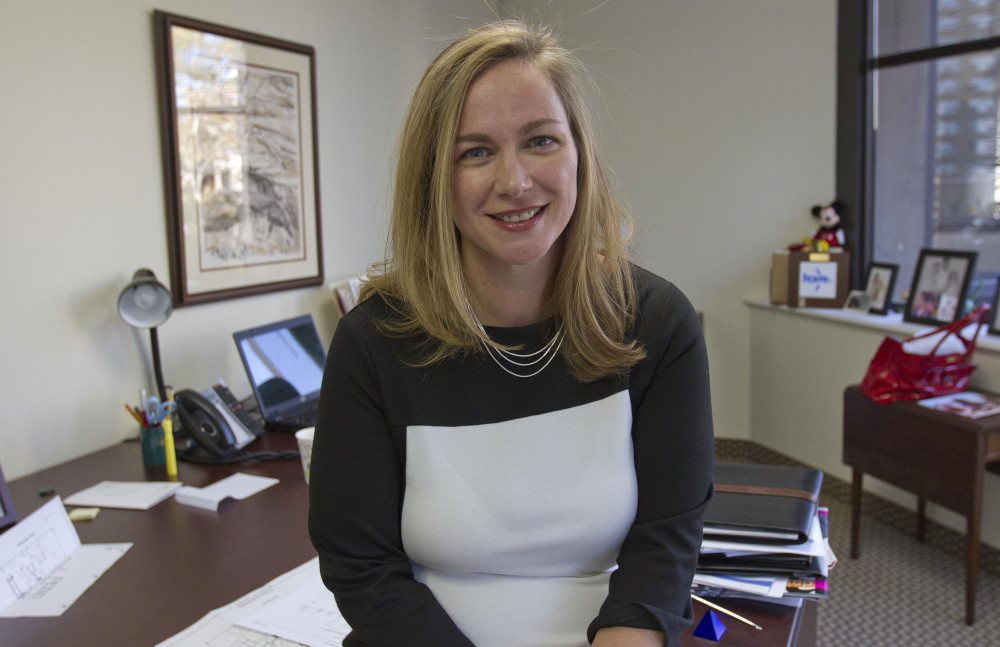By Diane Mastrull
The Philadelphia Inquirer.
PHILADELPHIA
A seismic shift has occurred at Fernley & Fernley in Philadelphia, the nation’s oldest association-management company.
A woman is now occupying the president’s office. And Trudie Bruner is not a Fernley family member.
Both are firsts for a company established in 1886 by the owner of a hardware store who saw business opportunity in providing a group of mid-size dealers, in hardware initially, then brushes, mops and more, services ranging from staffing and administrative support to dues collection, policy advocacy, convention planning and office-sharing.
The range of clients expanded over the next 128 years, with Fernley handling the administrative work for trade and professional associations too small to do it all themselves.
More than pressure, Bruner, 41, a mother of 12-year-old twins and a 10-year-old daughter, said she feels “honored, excited” by her Fernley firsts.
“I truly believe this management model offers something to the association world,” she said last week.
The model, crafted by chief executive officer G.A. Taylor Fernley, great-grandson of founder T. James Fernley, includes a drastic gender transformation in management at the company of 42 employees. Besides the president’s post, women are now at the helm in accounting, human resources, client services and meeting planning.
“Right now, I’m the only male on the management team,” said Taylor Fernley, 65, who relinquished the president’s title in October, in part to elevate Bruner’s standing with clients, he said. Hired in 2006 as an account executive, Bruner had served as chief operating officer since 2007, a title she retains.
In an era of scarce resources and difficulties in retaining members, a fundamental need of trade and professional associations is hands-on service and empathy, Taylor Fernley said, adding, “The female has much more of the characteristics of what are required in association management today.”
Shedding the president’s job also frees Taylor Fernley to concentrate on what he likes most: developing the company’s brand and expanding its client base and strategic alliances.
“One of the struggles I had was, ‘What do I tell my kid, knowing full well we have plans for Kyle?'” Taylor Fernley said.
Kyle Fernley, 30, the older of his two sons, is an account executive at Fernley & Fernley who “still has more stripes he has to earn,” his father said, and should not feel threatened by Bruner.
“At some point, he will be in my position,CEO.”
For now, Bruner and Taylor Fernley have to focus on making sure there is a company for Kyle Fernley to lead. Though Taylor Fernley would not disclose financials, he said revenue, generally derived from annual retainers ranging from $100,000 to $500,000 a client, depending on scope of services, put Fernley & Fernley in the top 10 percent of U.S. association-management companies.
Its 23 client associations, they average 325 members, but one, the American Flooring Alliance, has only nine members, include the Aviation Distributors and Manufacturers Association, the Industrial Supply Association, and the New York State Society of Physician Assistants.
The latter represents a deliberate expansion by Fernley & Fernley into health care, beginning in 2005 with its purchase of Resource Management Plus. That Philadelphia AMC specialized in the health sector.
Taylor Fernley said he believes health care “would have a brighter future” than Fernley & Fernley’s primary focus for 120 years, distributors. About one-third of its clients are now medical-related groups, including NYSSPA since 2008.
During a recent visit to Fernley & Fernley’s office (and, by extension, NYSSPA’s headquarters), the 2,300-member group’s president-elect, Jennifer Kelly, and government-affairs chair, David Jackson, outlined the challenges that have made third-party management an economic necessity.
Those include limited funds and reduced attendance at conventions.
“Here, we have shared services, an executive director, meetings manager, someone to answer the phone,” Jackson said. “The organization itself would not be large enough (to independently provide) these services.”
With business now recovered to better than pre-recession levels, “we have some aggressive growth goals,” Taylor Fernley said, declining to disclose them.
He suggested mergers are possible with some of the half-dozen other AMCs in the region, or with other synergistic outfits. “We think the model has more relevance now than ever before.”
Fernley & Fernley’s new president cited the need for constant change as one of the biggest challenges.
“One hundred and twenty-eight years,” Bruner said, “and we’re still having to maintain this entrepreneurial spirit.”














































































































































































































































































































































































